Project 5.1 Monte Carlo Method
The Monte Carlo Method is used to simulate experiments that are costly,
dangerous or impossible to perform and solve practical problems, as
illustrated in the following example.
A missile attack will be launched against a square target with
dimensions 2 m × 2 m as represented by the shaded region.
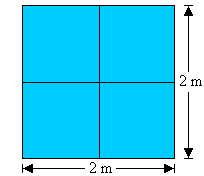
The target is enclosed in the following 4 m × 4 m square.
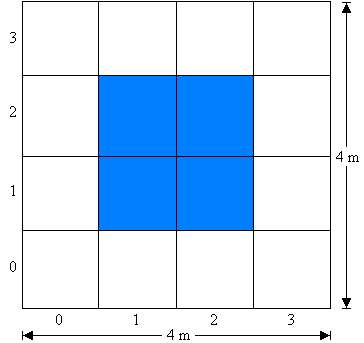
The missiles that are fired at the target are equally likely to fall
anywhere within the larger 4 m × 4 m square. We can use simulation to
determine the probability of hitting the target.
Assumption
Assume that 20 missiles are fired into the region.
Rule of Association
The rule of association between each random number generated as part of
the Monte Carlo Simulation and the outcome of each fired missile may be
defined as follows.
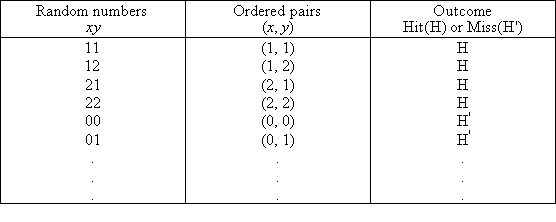
Trial
A trial consists of generating an acceptable two-digit random number, xy, with a calculator, forming an ordered pair (x, y), and then
examining what the ordered pair indicates about the outcome of the fired
missile.
E.g. A calculator is used to generate the following random numbers
which are converted into two digit random numbers:
0.942 ... 94 Disregard it
0.708 ... 70 Disregard it
0.003 ... 00 An acceptable two
digit number
To form an ordered pair (x, y), we take the first two-digits of
the random number generated by a calculator. Thus 003 implies that the
missile has struck at (0, 0); and therefore failed to hit the target.
Event of Interest
The event of interest is the event of a missile hitting the target,
i.e. {(1, 1), (1, 2), (2, 1), (2, 2)}.
Table
Record the results of 20 simulation trials in a table similar to the
following table.
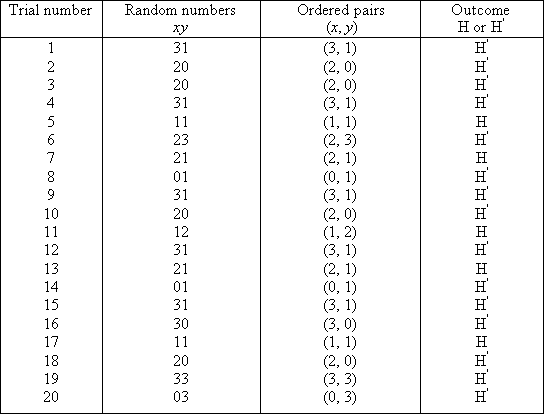
Conclusion

Connection between Area and Probability

We notice that:

Do your simulation results agree with this? If not, why not?
What happens to the estimated probability of a hit when the number of
simulations increases?
This project has introduced the idea of calculating the areas of
figures using simulations.
Area enclosed by a Figure
Let us calculate the area of the shaded region, as shown in the
diagram.
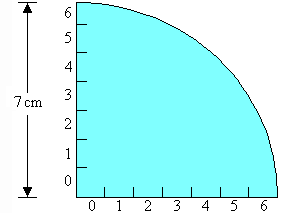

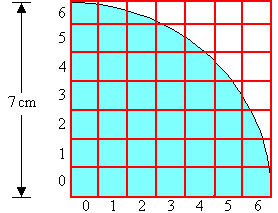
Rule of Association

Trial

Assumption
The ordered pairs:
{(0, 6), (1, 6), (2, 6), (3, 6), (3, 5), (4, 5), (4, 4), (5, 4), (5,
3), (6, 3), (6, 2), (6, 1), (6, 0)}
represent the partly shaded 1 cm × 1 cm squares.
Assume that if any of these ordered pairs is generated by a trial, the
first occurrence should be counted inside the shaded region, the second
occurrence should be counted outside the shaded region and so on. For
example, if the ordered pairs generated include (4, 5), … , (5, 4), …
, (6, 2), ... they lie inside, …, outside, …, inside etc.
Event of Interest
The event of interest is the event of an ordered pair lying inside the
shaded region.
Table
Record the results of 15 simulated trials in a table similar to the
following table.
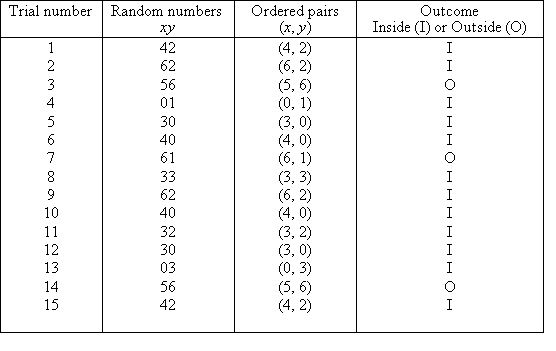
Simulated Area
We notice that 12 trials out of 15 are favourable, i.e. 12 squares lie
inside the shaded region.

The shaded region happens to be a quadrant (one-quarter) of a circle.
So, we can verify the above result using the formula for the area of a
circle.


Note that the minimum number of simulation trials needed for a more
accurate result would be 100.
Problems
What is the area of the shaded region based on your simulation trials?
Find the area of the quadrant of a circle by counting the number of
shaded small squares. |